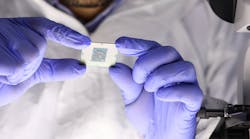What happens when the useful life of multimillion dollar equipment exceeds the viability of the parts that comprise it? Oftentimes, a chaotic search for components that are hard to find, in short supply or simply not produced by their original manufacturers anymore. When sourcing such components, due diligence often goes by the wayside. And counterfeiters know it.
Airlines Are in the Crosshairs
The airline industry is finding this out the hard way. In a spare parts debacle that has ensnared at least six major airlines, aircraft engine parts backed by fraudulent airworthiness documentation have been identified in planes operated by Boeing, Airbus, Southwest Airlines, Delta Airlines, United Airlines, and Virgin Australia Airlines. It must be emphasized that no incidents associated with the questionable parts have been reported, but the Federal Aviation Administration and the European Union Safety Agency have both issued advisories requesting that aircraft operators and maintenance companies comb their records for parts supplied by the alleged perpetrator, AOG Technics. And the London High Court issued an order demanding that AOG Technics disclose every part it has sold—estimated to number in the thousands.1
Counterfeit Parts Remain an Ongoing Challenge
While the airlines have placed blame squarely on AOG Technics’ shoulders, purchasing is a two-way street that requires a seller and a buyer. And whenever there is money to be made, rest assured there are counterfeiters to be found. It’s often a crime of opportunity exacerbated by complex global supply chains and parts shortages.
Let’s shift for a moment from engine parts such as bushings and turbine blades to electronic components. AOG Technics may be in the crosshairs now, but in 2012 a Senate Armed Services Report proved just as eye-opening. The investigative committee discovered 1,800 cases of counterfeit electronic parts installed in cargo and surveillance planes, collision avoidance systems, submarines, weapon systems and more—all in all, more than 1 million fakes.2 The report called out the defense industry’s reliance on unvetted independent distributors to supply electronic parts.
Clearly, counterfeiters continue to see opportunity in commercial and military supply chains. Counterfeiting remains the largest criminal enterprise in the world, bringing in up to $4.5 trillion per year. 3To be fair, though, that number includes everything from fake Louis Vuitton purses sold on street corners to used electronic components. To put a finer point on it, in 2020—a full eight years after the U.S. Senate’s report—the U.S. Department of Homeland Security found that 15% of all spare and replacement microchips purchased by the Pentagon were counterfeit.3
The Cat-and-Mouse Game
The ERAI notes that “organizations must be extra vigilant when sourcing parts as previously unreported counterfeit parts are constantly entering the electronics supply chain and the threat of encountering one of these parts remains very high.” The organization, which monitors, investigates and reports issues affecting the global electronics supply chain, estimated a 35% increase in the number of counterfeit and nonconforming parts reported from 2021 to 2022. At the top of the list: analog integrated circuits (ICs), programmable logic ICs and microprocessor ICs.4
Forging documentation is one of the easiest ways for counterfeiters to slip their wares through regulatory safety nets, but it’s by no means the only way. At the simple end of the scale, and among the most popular, are altering component packaging, tampering with QR codes, and changing identifying numbers and other proprietary markings to lead buyers to believe the parts are first-use originals straight from the manufacturer. More complex counterfeiting techniques may involve using stolen intellectual property or manufacturing dies to produce components. While much of that can be detected via testing using microscopy, x-rays and other physical techniques, one of the hardest to counterfeiting methods to detect is the use of “trojan codes” being embedded into FPGAs or memory components that make them vulnerable to cyberattacks.
The Value of Authorized Distribution Partners
Counterfeiters can be quite sophisticated in their methods and agile enough to switch techniques when they find themselves in the hot seat. So, what does the ERAI’s advice to “be extra vigilant” entail when manufacturing deadlines loom, profits are on the line and component shortages tempt buyers to dabble in the grey market to fill the gaps? In any industry, an ounce of prevention is worth a pound of cure. Procuring parts directly from the manufacturer or an authorized distributor goes a long way in avoiding counterfeits.
Legacy products with extended life spans—common across all types of industries, from military and aerospace to medical and industrial equipment—can suffer from component obsolescence and are at a high risk of counterfeit material. Authorized distribution partners work with original equipment manufacturers and their customers to solve the challenges posed by components that are difficult to source or nearing end of life. Authorized distribution partners deliver peace of mind by:
- Analyzing bill of materials to identify potential problem components and building buffer inventories in anticipation of future needs.
- Offering end-of-life extension services to provide a continuous supply of quality products that help their customers avoid costly redesign and requalification of critical components.
- Integrating quality initiatives and supply chain solutions into customers’ processes to avoid the headaches—and potential legal consequences—associated with procuring and stocking hard-to-find parts.
- Working with customers to make better sourcing decisions that keep them away from scarcity-based decisions that may drive them to unscrupulous suppliers.
- Storing product in wafer/die form for product resurrection and long-term manufacturing needs.
The key to avoiding counterfeit components can be summed up in one word: “before.” Authorized distribution partners deploy data-driven mitigation strategies using analytical tools that generate deep insights to understand and take control of obsolescence challenges—before they become insurmountable, before they lead to unwise purchasing decisions, and before they impact a customer’s bottom line.
1. Aviation Week, “AOG Technics Ordered To Provide Details of Engine Parts Transactions,” Sept. 20, 2023
2. U.S. Senate, Inquiry Into Counterfeit Electronic Parts in the Department of Defense Supply Chain, Report of the Committee on Armed Services, United States Senate, May 21, 2012
3. Library of Congress, U.S. Intellectual Property and Counterfeit Goods— Landscape Review of Existing/Emerging Research, A Report Prepared by the Federal Research Division, Library of Congress, Under an Interagency Agreement with the U.S. Patent and Trademark Office, U.S. Department of Commerce, February 2020
4. ERAI, 2022 Annual Report, 2022








